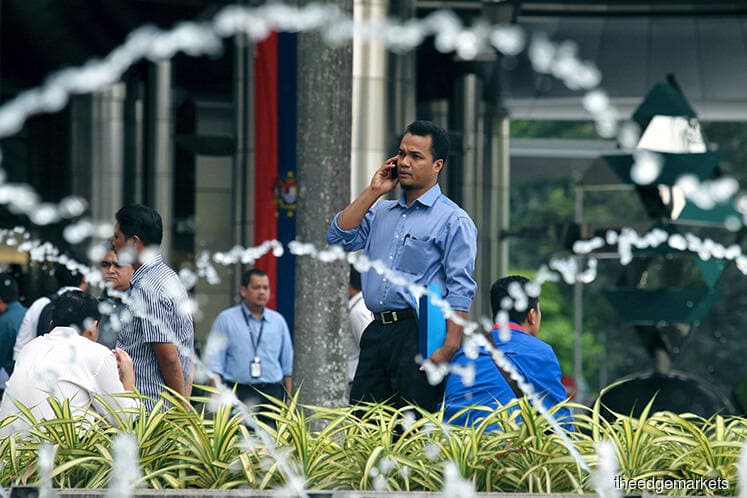
This article first appeared in The Edge Financial Daily on July 27, 2018
KUALA LUMPUR: The country’s labour productivity rose 3.8% in 2017, beating the 11th Malaysia Plan (11MP)’s annual target of 3.7% for the first time in five years, helped by growth across five economic sectors under review.
The latest growth figure brings Malaysia’s labour productivity level to RM81,268 or 88% of the 2020 target of RM92,300 as underlined in the 11MP (2016-2020), according to the Productivity Report 2017/2018 released by Malaysia Productivity Corp (MPC) yesterday.
Speaking at the launch of the report, International Trade and Industry Minister Darrel Leiking emphasised that the current government “understands the importance of productivity as a game changer for economic growth”.
“Hence, enhanced collaboration, cooperation and communication between the private and public sectors are critical to improve our productivity performance and outcomes, in line with the objective to achieve vision 2020,” he said.
The report highlighted that in terms of labour productivity growth, Malaysia still trailed China (7.1%), India (4.3%) and the Philippines (3.9%) during the year.
However, in terms of labour productivity per person employed in US dollar terms, Malaysia led other Asian neighbours at US$64,259 against Thailand (US$31,515), China (US$30,099), Indonesia (US$26,366), the Philippines (US$20,096) and India (US$17,164).
The biggest contributor to Malaysia’s labour productivity growth in 2017 was the mining sector (6.8%), followed by services (5.0%) and manufacturing (4.3%).
Also registering growth were the construction (2.4%) and agricultural (1.4%) sectors — but still slower compared with the annual targets set under the 11MP at 9.6% and 3.6%, respectively.
It should be noted that labour productivity growth in the mining and construction sectors has slowed on-year, having expanded at 15.1% and 10.0%, respectively, in 2016.
Multi-factor productivity (MFP) growth — or factors outside capital and labour utilisation such as technological progress — represented 2.2% of overall labour productivity growth for the year, with the balance 1.6% driven by capital-intensity growth, said the report.
“The country has increased its investment in the last two years as it prepares for Industry 4.0,” it said.
Note, however, that 2017’s MFP growth at 2.2% was still slower than the 11MP annual target of 2.3%.
Between 2011 and 2016, Malaysia’s MFP growth contracted 0.79%, putting the country ahead of only Singapore (-1.08%) in the same period.
Across the region, Vietnam’s MFP saw a 0.25% contraction in the same period, while other Asian countries such as Thailand had MFP growth of 0.30%, South Korea (0.41%), Taiwan (0.81%) and India (1.6%).
On a related matter, MPC said in the report that employment grew 2% in 2017 — also the first year-on-year increase in five years — from a slow 0.7% growth recorded in 2016. This was helped by employment growth across all three skills levels in the year, compared with contraction of medium and low-skilled employment in 2016.
For 2018, the MPC has forecast labour productivity to expand 3%-4%.
Growth in 2018 is expected to be led by mining (9%), followed by construction (7%), services (4%) and manufacturing (4%) while agriculture is forecast to experience a 2% contraction, said the report.
To reach the 11MP productivity target of RM92,300 by 2020, the country needs to focus on adoption of information technology, reduction of skills gaps, regional integration and strengthening of institutions throughout the entire productivity ecosystem, said MPC.